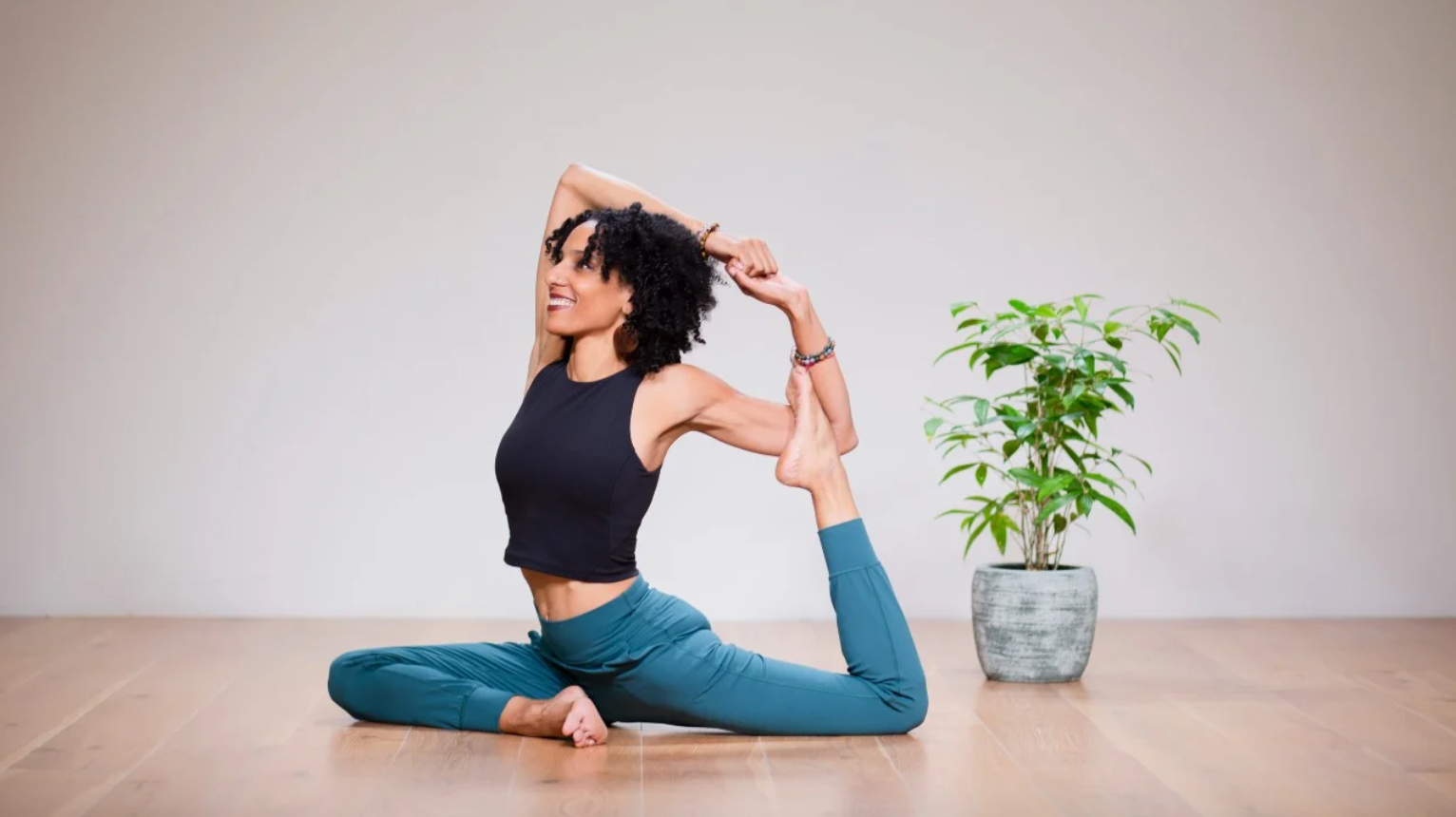Yoga works on multiple levels—physical, mental, and emotional—to reduce stress. Here’s how it helps:
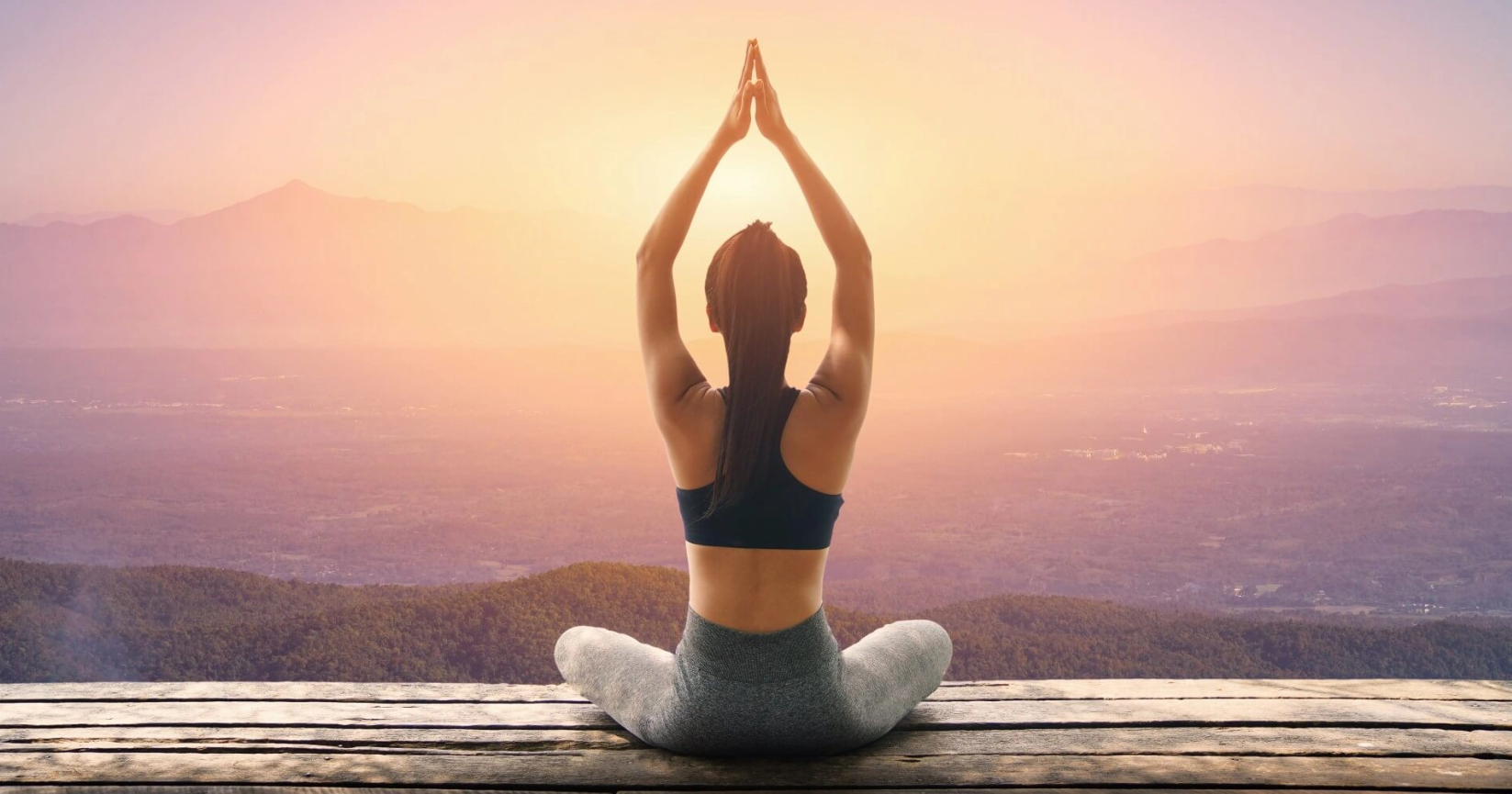
Physical Release: Yoga stretches and strengthens muscles, releasing physical tension that can build up in the body due to stress.
Calms the Nervous System: Yoga activates the parasympathetic nervous system, which promotes relaxation and helps the body recover from stress.
Mindful Breathing: Breathwork (pranayama) helps regulate the breath, calm the mind, and lower stress levels. Conscious breathing is a key element of stress relief in yoga.
Promotes Mindfulness: Yoga encourages mindfulness by bringing attention to the present moment, helping to shift focus away from stressors and anxious thoughts.
- Best Yoga Poses for Stress Relief
Certain yoga poses are particularly effective at relieving stress because they relax the body, calm the mind, and promote deep breathing. Here are some of the best yoga poses to practice when you’re feeling stressed: - Breathing Exercises for Stress Relief
Breath control, or pranayama, is a powerful way to calm the mind and reduce stress. Here are some simple but effective breathing exercises to try when you’re feeling overwhelmed: - Meditation Techniques for Stress Relief
Incorporating meditation into your yoga practice is an excellent way to quiet the mind and manage stress. Here are a few meditation techniques that can help you relax and center yourself: - Creating a Stress-Free Yoga Routine
To make yoga a regular part of your stress-management routine, it’s important to create a space and schedule that supports relaxation. Here’s how to build a yoga practice focused on stress relief: - Tips for Staying Calm Off the Mat
Yoga teaches valuable tools for managing stress that can be applied off the mat as well. Here are a few ways to bring the principles of yoga into your daily life to reduce stress:
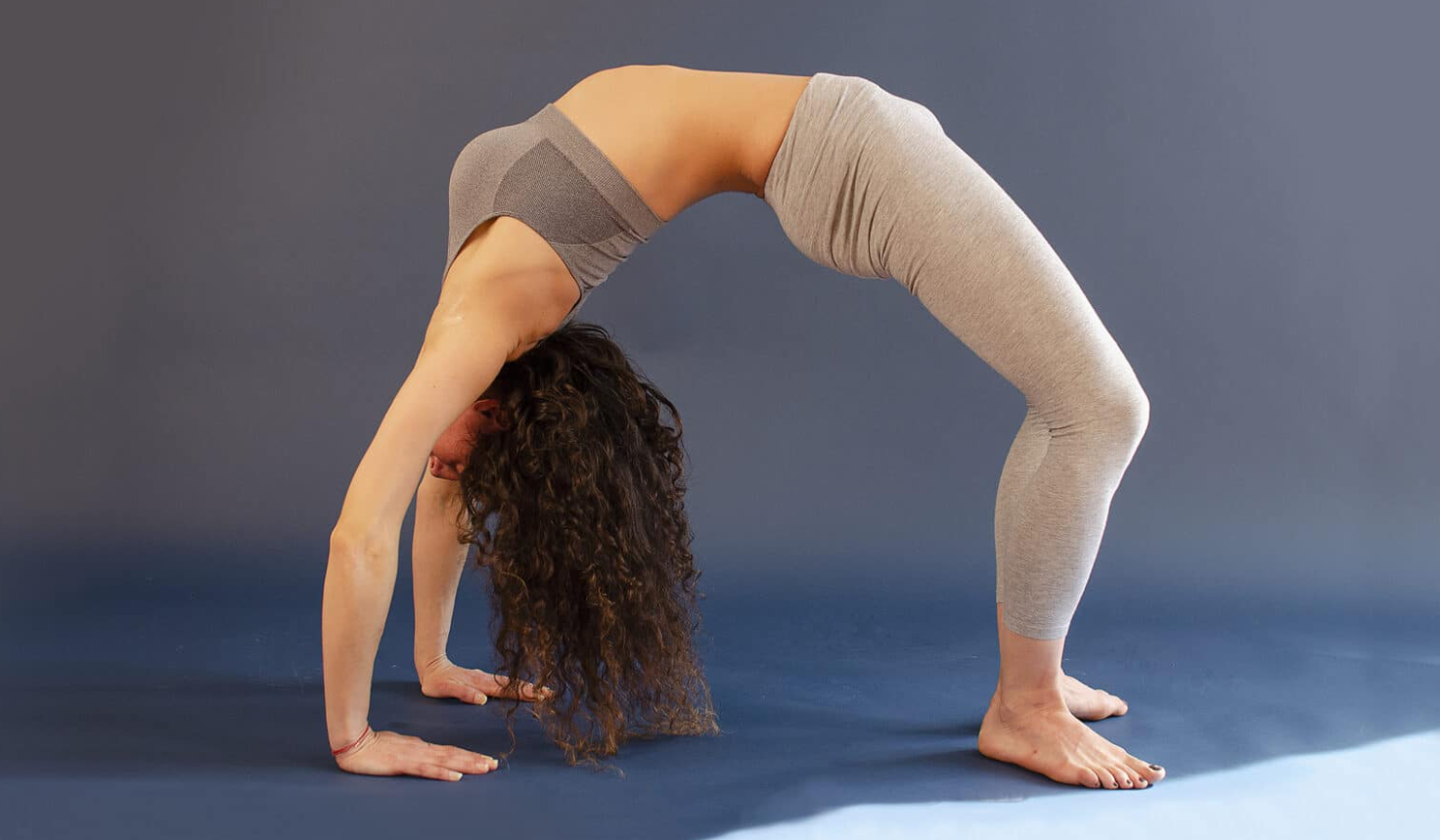
Child’s Pose (Balasana): A calming pose that helps stretch the lower back, hips, and thighs while encouraging deep breathing. Kneel on the floor, sit back on your heels, and stretch your arms forward, resting your forehead on the mat.
Why It Helps: Child’s Pose gently stretches the body and encourages a restful state, making it ideal for reducing tension and calming the mind.
Legs Up the Wall (Viparita Karani): This restorative pose helps relax the lower body and improves circulation. Lie on your back with your legs extended up the wall, arms resting by your sides, and breathe deeply.
Why It Helps: Legs Up the Wall is a gentle inversion that promotes relaxation, relieves tired legs, and reduces stress by calming the nervous system.
Cat-Cow Pose (Marjaryasana-Bitilasana): A gentle flow between two poses that stretches the spine and releases tension in the back. Start on your hands and knees, arch your back (Cat Pose), then drop your belly while lifting your chest (Cow Pose).
Why It Helps: This flowing movement helps release tension in the back and neck while synchronizing breath with movement, which can soothe stress.
Seated Forward Bend (Paschimottanasana): A seated pose that stretches the hamstrings and lower back while calming the mind. Sit on the floor with your legs extended, and fold forward from your hips, reaching for your feet or shins.
Why It Helps: Forward bends are naturally calming and help quiet the mind, making this pose ideal for stress relief.
Bridge Pose (Setu Bandhasana): A gentle backbend that stretches the chest, neck, and spine while grounding the body. Lie on your back with your knees bent and feet flat on the floor. Lift your hips toward the ceiling while keeping your shoulders on the mat.
Why It Helps: Bridge Pose opens the chest and relieves tension in the spine, promoting relaxation and reducing feelings of anxiety.
Savasana (Corpse Pose): This is the ultimate relaxation pose, typically done at the end of a yoga session. Lie flat on your back with your arms by your sides, palms facing up, and close your eyes. Focus on relaxing each part of your body.
Why It Helps: Savasana allows the body and mind to fully relax, integrating the benefits of your yoga practice and calming the nervous system.
Deep Belly Breathing (Diaphragmatic Breathing): This technique encourages deep, full breaths that engage the diaphragm, promoting relaxation.
How to Do It: Sit or lie down in a comfortable position. Place one hand on your belly and one on your chest. Inhale deeply through your nose, allowing your belly to rise, and then exhale slowly through your mouth, letting your belly fall. Repeat for several minutes.
Alternate Nostril Breathing (Nadi Shodhana): A balancing breathing technique that calms the mind and reduces anxiety.
How to Do It: Sit in a comfortable position. Close your right nostril with your thumb and inhale through your left nostril. Then close your left nostril with your ring finger, release your right nostril, and exhale through it. Inhale through your right nostril, close it, and exhale through your left. Repeat this cycle for several minutes.
4-7-8 Breathing: A simple yet effective technique for reducing anxiety and promoting relaxation.
How to Do It: Inhale through your nose for a count of 4, hold the breath for a count of 7, and exhale slowly through your mouth for a count of 8. Repeat for 4-6 rounds.
Ujjayi Breath (Victorious Breath): A calming breath technique often used in yoga to synchronize movement with breath.
How to Do It: Inhale deeply through your nose, and slightly constrict the back of your throat as you exhale through your nose, creating a soft, ocean-like sound. This breath helps focus the mind and bring calmness to the body.

Guided Meditation: Use a guided meditation app or recording to help you focus on relaxation. These meditations often use calming visualizations or body scans to promote relaxation.
Mindfulness Meditation: Focus on the present moment by paying attention to your breath, bodily sensations, or sounds around you. Whenever your mind starts to wander, gently bring your attention back to the present.
Loving-Kindness Meditation (Metta): A meditation practice that fosters compassion and reduces stress. Focus on sending feelings of love and kindness to yourself, loved ones, and even people you may have difficulties with.
Mantra Meditation: Choose a calming word or phrase (mantra) to repeat silently to yourself during meditation. This helps quiet the mind and reduce mental chatter.
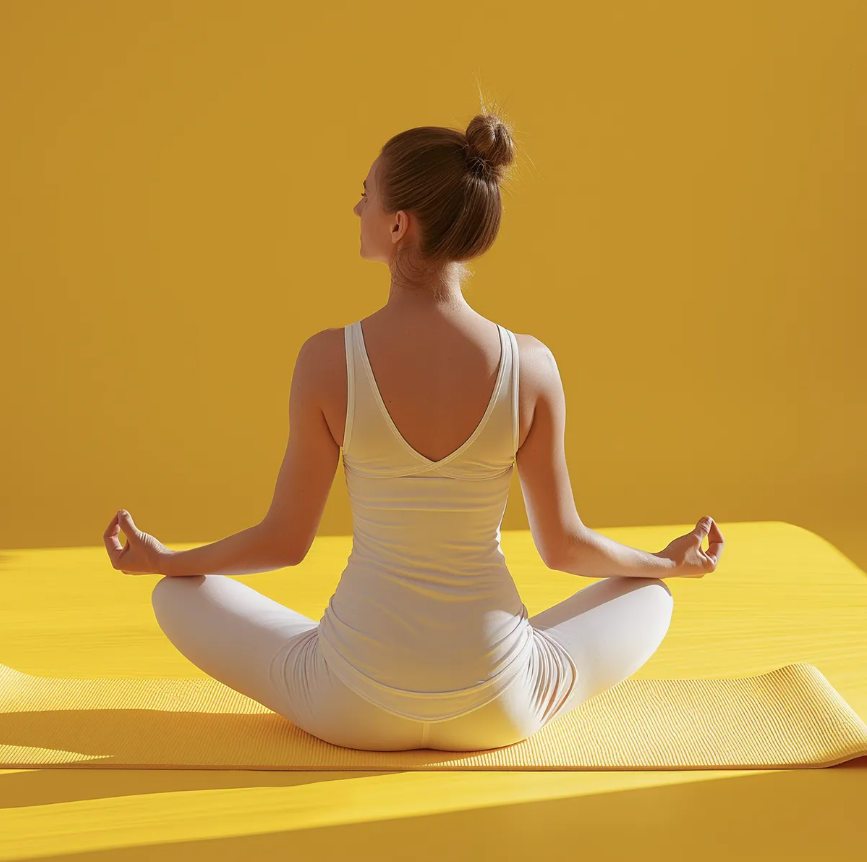
Set Aside Time Daily: Even just 10-15 minutes of yoga or meditation each day can make a big difference in your stress levels. Try to practice at the same time each day to create a consistent routine.
Create a Calm Space: Designate a quiet area in your home for yoga practice. Make it inviting with soft lighting, calming scents (like lavender or sandalwood), and minimal distractions.
Incorporate Restorative Yoga: On particularly stressful days, practice restorative yoga poses that allow the body to relax deeply, such as Legs Up the Wall or Savasana.
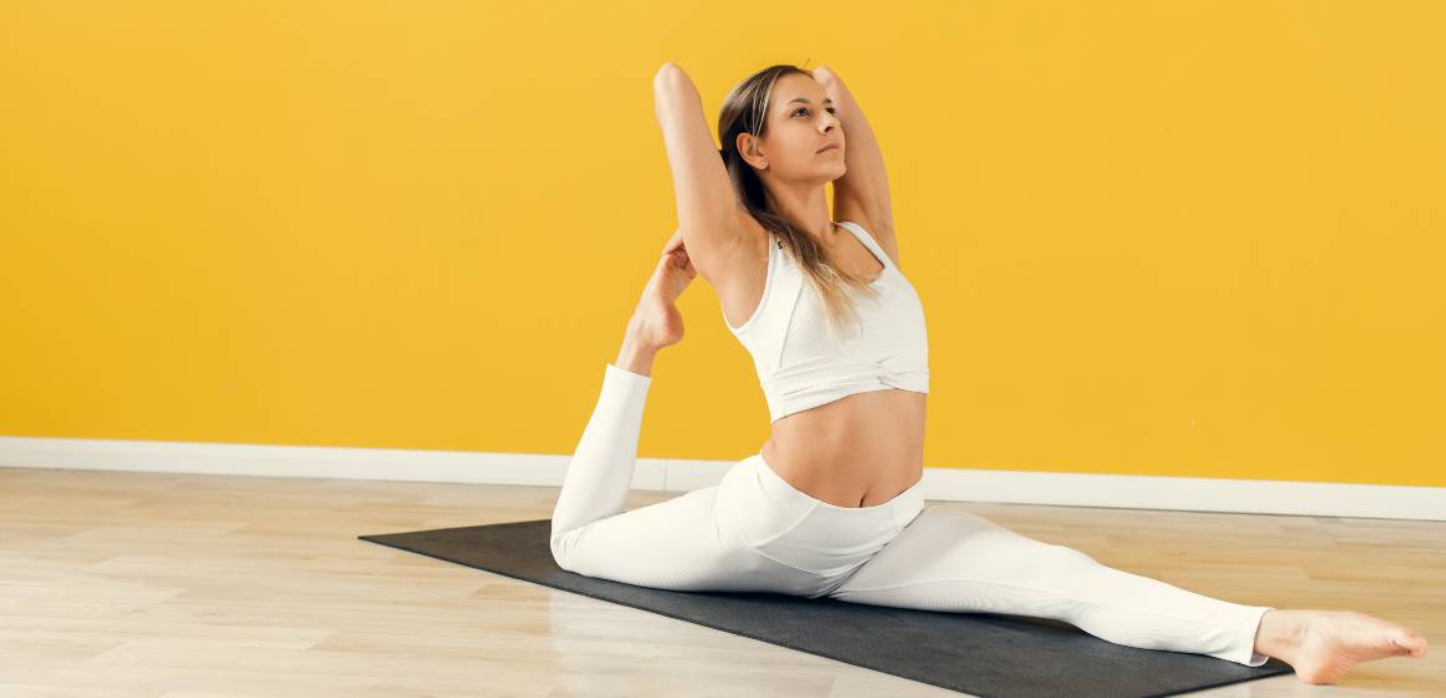
Practice Mindful Breathing: When you feel stressed during the day, take a few moments to practice deep belly breathing or Ujjayi breath to center yourself.
Stay Present: Yoga encourages mindfulness, which can help you stay focused on the present moment instead of worrying about the future or dwelling on the past.
Use Relaxation Poses Before Bed: If you have trouble winding down at night, practice a few restorative yoga poses or breathing exercises to calm your mind and prepare for sleep.
Final Thoughts
Yoga is a powerful tool for managing stress, reducing anxiety, and promoting overall relaxation. By incorporating calming poses, breathwork, and meditation into your daily routine, you can create a sense of balance and peace that extends beyond your yoga mat. Remember, yoga is a personal practice, so take your time, listen to your body, and enjoy the process of finding calm in the midst of life’s challenges.
